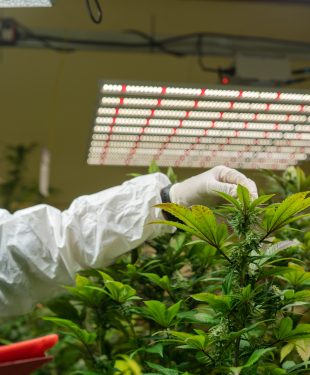With the recent legalization of recreational cannabis in California, fans have been jumping at the opportunity to visit Smokea for great deals on bubblers, pipes, and vaporizers. However, local municipalities have taken on a crucial and pivotal role in regulating the rapidly growing cannabis industry. Through the implementation of comprehensive legislation and ordinances, these municipalities strive to strike a delicate balance between the needs and interests of business owners, the local community, and the overall economic landscape.
This informative and engaging article delves into the specific ways in which local governments regulate the cultivation, distribution, and consumption of cannabis in California. It offers a comprehensive exploration of the challenges, opportunities, and implications involved in this ever-evolving industry. By examining the intricacies of these regulations, readers will gain a deeper understanding of the complex dynamics shaping the cannabis market in California.
Understanding the Legislative Framework
The Medicinal and Adult-Use Cannabis Regulation and Safety Act (MAUCRSA) serves as the foundation for cannabis regulation in California. It sets the broad framework for the industry. However, it’s worth noting that local governments have the power to establish their own specific rules and regulations. This flexibility enables municipalities to address unique local needs and concerns when it comes to cannabis regulation. This approach ensures that regulations can be tailored to the specific context of each community, promoting a more effective and inclusive regulatory system.
Balancing Business, Community, and the Economy
Local municipalities carefully oversee the cultivation of cannabis, addressing concerns such as land use, zoning restrictions, and environmental impacts. By implementing cultivation ordinances, they aim to prevent conflicts with other agricultural activities, protect natural resources, and ensure compliance with pesticide regulations. Expert Quote (Dr. Sarah Hernandez, Cannabis Regulation Specialist): “Municipalities often strive to strike a balance that allows cannabis cultivation to thrive while safeguarding the environment and addressing potential odor, water, and energy concerns.”
 Local governments regulate the licensing and operation of cannabis dispensaries and delivery services, including proximity to schools and public spaces. They also address concerns related to security, product testing, packaging requirements, and the prevention of illicit sales. Balancing accessibility, safety, and community preferences is paramount. According to a recent report by the California Bureau of Cannabis Control, local regulations have resulted in a significant reduction in illegal cannabis operations, contributing to increased tax revenues and public safety.
Local governments regulate the licensing and operation of cannabis dispensaries and delivery services, including proximity to schools and public spaces. They also address concerns related to security, product testing, packaging requirements, and the prevention of illicit sales. Balancing accessibility, safety, and community preferences is paramount. According to a recent report by the California Bureau of Cannabis Control, local regulations have resulted in a significant reduction in illegal cannabis operations, contributing to increased tax revenues and public safety.
In order to effectively regulate cannabis consumption, municipalities address various important issues. These include public consumption, restrictions on smoking, and the establishment of cannabis consumption lounges. The primary objective is to protect non-consumers from any unwanted exposure, while simultaneously providing safe and legal consumption options for responsible adults. By addressing these matters, municipalities strive to create a well-balanced and inclusive approach to cannabis regulation within their communities.
Challenges and Opportunities
The diverse approaches taken by different municipalities have created a complex patchwork of regulations across California. This lack of uniformity poses challenges for businesses seeking to navigate the legal landscape, leading to compliance burdens and potential disparities in market access. Balancing the interests of the community requires active participation and input from residents. Some municipalities have established community forums and advisory committees to ensure local concerns are heard and addressed, fostering a sense of ownership and transparency in the decision-making process.
Local municipalities have embraced public health campaigns to educate residents about responsible cannabis consumption, potential health risks, and the importance of keeping cannabis products out of the hands of minors. Collaborations with local health departments and community organizations help disseminate accurate information. Municipalities work closely with law enforcement agencies to enforce regulations, deter illegal activities, and ensure public safety. This includes monitoring compliance, conducting inspections, and implementing robust security measures in licensed cannabis businesses.
Conclusion
In the state of California, the regulation and oversight of the flourishing cannabis industry lies predominantly within the jurisdiction of local municipalities. These local bodies play a vital and multifaceted role in striking a delicate balance between the needs and aspirations of business owners, the interests and concerns of the community, and the ever-evolving economic landscape.
With the responsibility of crafting and implementing regulations, local governments strive to cultivate an environment that not only fosters the growth of responsible cannabis practices but also ensures the protection of public health and safety. By enacting and enforcing policies, they actively contribute to the promotion of sustainable economic growth within the cannabis industry.
To achieve these goals and facilitate a thriving and harmonious cannabis sector, ongoing collaboration and a forward-thinking approach to evolving best practices are key. Through these concerted efforts, local governments have the power to shape a vibrant and sustainable cannabis industry that benefits all Californians.
Read more lifestyle and cannabis articles at ClichéMag.com
Images provided by Deposit Photos, BingAI, Adobe Stock, Unsplash, Pexels, Pixabay & Creative Commons



